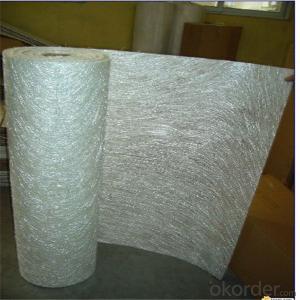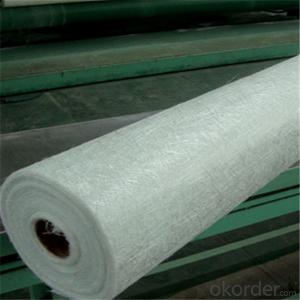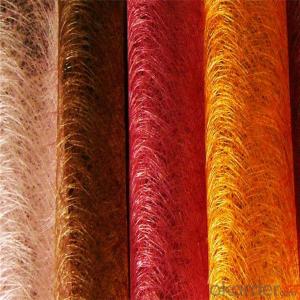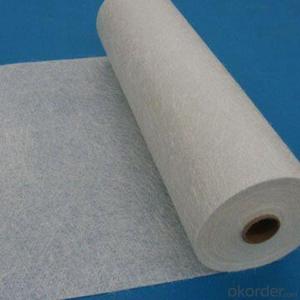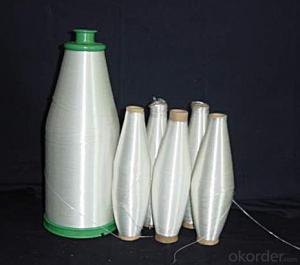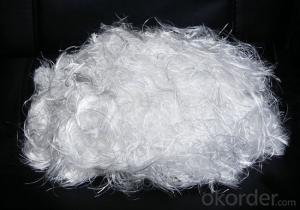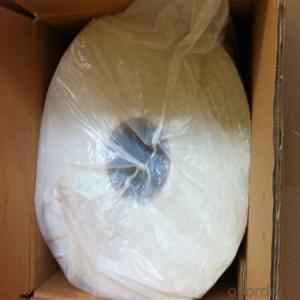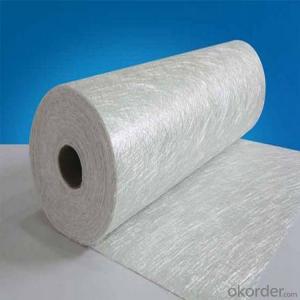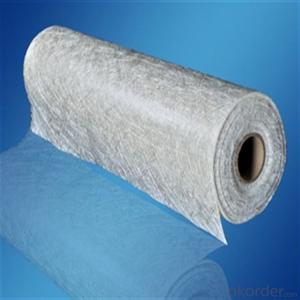Easy Operation Building Materials Fiberglass Chopped Stand Mat
- Loading Port:
- Tianjin
- Payment Terms:
- TT OR LC
- Min Order Qty:
- 100 m.t.
- Supply Capability:
- 20000 m.t./month
OKorder Service Pledge
OKorder Financial Service
You Might Also Like
Quick Details
| Technique: | Chopped Strand Fiberglass Mat (CSM) | Dimensions: | according to customer's request | Mat Type: | Stitch Bonding Chop Mat |
| Fiberglass Type: | E-Glass | Softness: | middle | Place of Origin: | Jiangxi, China (Mainland) |
| Brand Name: | cnbm | Model Number: | CSMEP100,CSMEP120,CSMEP200,etc | Product: | Cooling Tower Building Glass Fiber Fiberglass Chopped Strand Mat(csm) |
| Color: | White | Width: | 1040mm,1250mm,ect. | Area weight: | 225-900g/m2 |
| Application: | filament winding,panpel,ect |
Packaging & Delivery
| Packaging Details: | Each roll in one polybag then to an export carton. |
| Delivery Detail: | Within 18 days after confirm order |
Fiberglass Chopped strand mat
Powder Strand Mats Product Features:
1) Uniform density ensures consistent fiberglass content and mechanical properties of the composites products.
2)Uniform powder distribution ensures good mat integrity, little loose fibers and small roll diameter.
3) Excellent flexibility ensures good mold ability with no spring back at sharp angles.
4)Fast and consistent wet-out speed in resins and rapid air lease reduce resin consumption and production cost and enhances productivity and mechanical properties of the end products.
5)The composite products have high dry and wet tensile strength and good transparency.
Picture
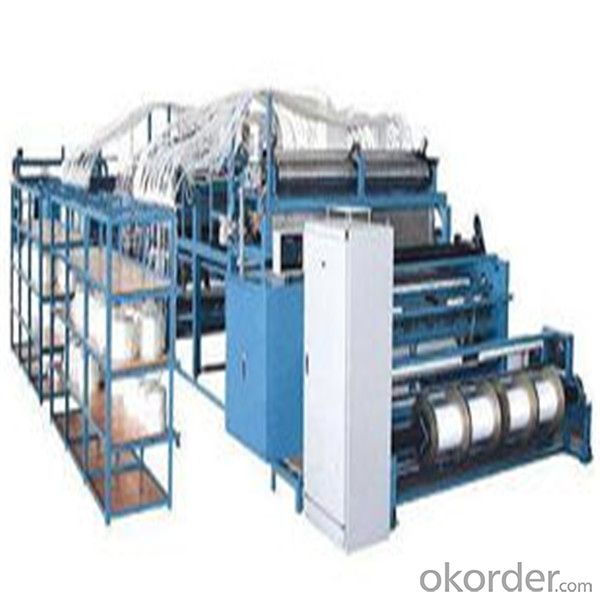
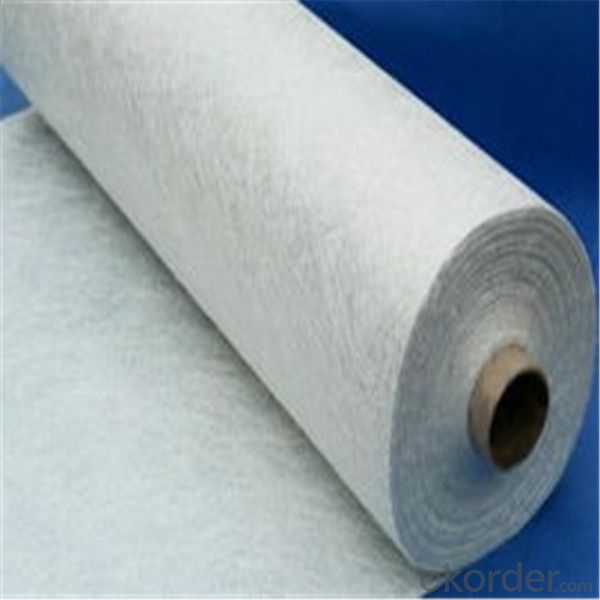
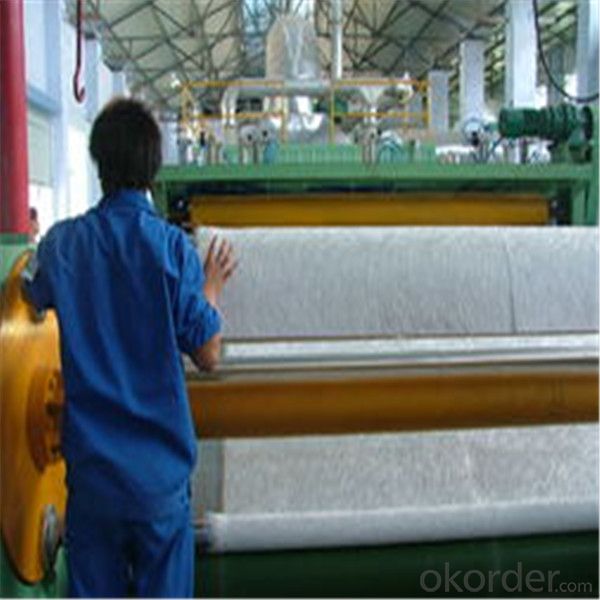
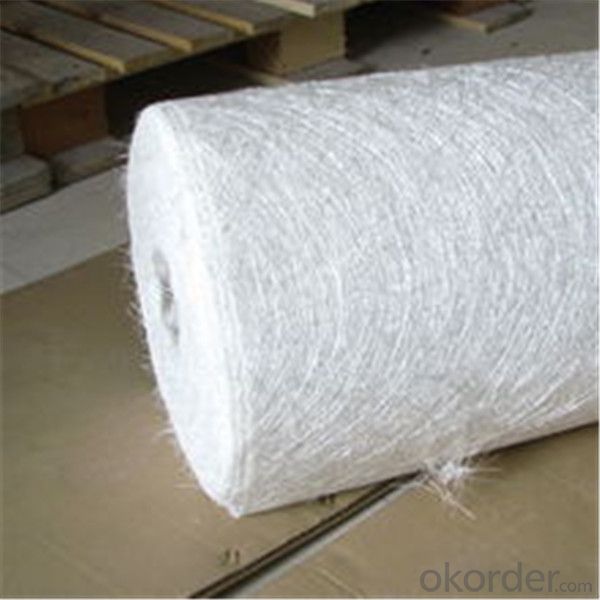
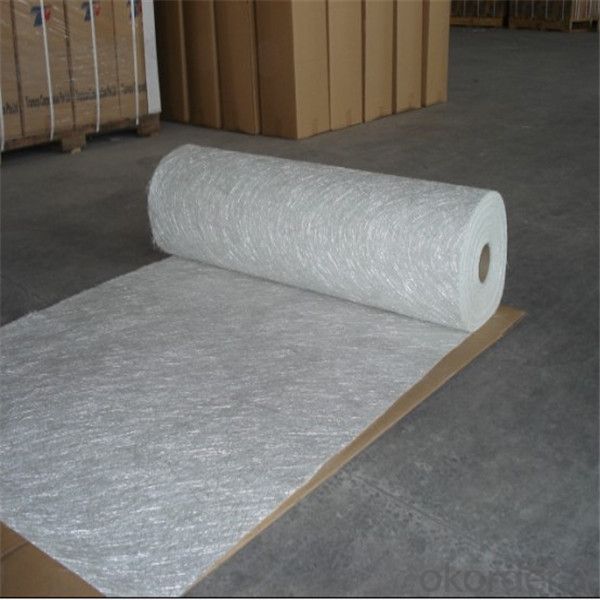
- Q:Does fiberglass chopped strand improve the chemical resistance of composite materials?
- The chemical resistance of composite materials can be enhanced through the incorporation of fiberglass chopped strand. Fiberglass possesses exceptional chemical resistance due to its inert nature and lack of reactivity with most chemicals. When utilized as a reinforcement in composite materials, particularly in fiberglass-reinforced plastics (FRPs), the chopped strand contributes to an overall improvement in chemical resistance. By reinforcing the composite matrix, the chopped strand augments its strength and durability. This reinforcement effectively impedes the infiltration and absorption of chemicals, thereby heightening the composite material's resistance to chemical attacks. Moreover, the fiberglass chopped strand can function as a protective barrier, preventing the chemicals from reaching the underlying layers of the composite and causing harm. To further enhance the chemical resistance of composite materials, it is crucial to select the appropriate type and sizing of the fiberglass chopped strand. Different types of fiberglass, such as E-glass, S-glass, and boron fibers, offer varying degrees of chemical resistance. Additionally, the application of a specific sizing or coating to the chopped strand can also bolster its chemical resistance properties. Nevertheless, it is important to acknowledge that while the incorporation of fiberglass chopped strand can enhance the chemical resistance of composite materials, it does not render them completely impervious to all types of chemicals. Certain aggressive chemicals, such as potent acids or bases, may still elicit damage to the composite, even with the presence of fiberglass chopped strand. Consequently, it is imperative to consider the precise chemical environment in which the composite will be utilized and accordingly select suitable materials and reinforcements.
- Q:What is the cost of fiberglass chopped strand compared to other reinforcement materials?
- The cost of fiberglass chopped strand is generally considered to be more affordable compared to other reinforcement materials. Fiberglass is a widely used and readily available material, which contributes to its lower cost. Additionally, fiberglass offers excellent strength-to-weight ratio, durability, and corrosion resistance, making it a cost-effective choice for many applications. In comparison to other reinforcement materials such as carbon fiber or aramid fibers, fiberglass chopped strand is typically more budget-friendly while still providing satisfactory performance. However, it is important to consider the specific requirements and characteristics of the project when selecting a reinforcement material, as cost should not be the sole determining factor.
- Q:Is fiberglass chopped strand suitable for thermal insulation?
- Indeed, fiberglass chopped strand proves to be an ideal option for thermal insulation purposes. Renowned and extensively utilized, fiberglass stands out due to its exceptional thermal qualities. Its low thermal conductivity allows for efficient heat transfer prevention, ensuring the maintenance of desired temperatures within confined areas. Employing fiberglass in its chopped strand configuration further enhances its insulation capabilities, as it can be effortlessly packed or blown into cavities, forming a seamless and efficient barrier. Moreover, fiberglass chopped strand insulation guarantees safety, as it is non-combustible, rendering it a secure choice for thermal insulation across diverse industries and applications.
- Q:Can fiberglass chopped strand be used in the production of sporting goods?
- Yes, fiberglass chopped strand can be used in the production of sporting goods. It is commonly used in the manufacturing of sporting equipment such as hockey sticks, surfboards, and skis due to its high strength and lightweight properties.
- Q:Is fiberglass chopped strand suitable for renewable energy applications?
- Yes, fiberglass chopped strand is suitable for renewable energy applications. Fiberglass is a versatile material known for its strength, durability, and resistance to corrosion, making it an ideal choice for various renewable energy applications. In wind energy, fiberglass chopped strand is commonly used in the manufacturing of wind turbine blades. The material's high tensile strength and ability to withstand harsh weather conditions make it an excellent choice for this application. Fiberglass also offers lightweight properties, which is crucial for minimizing the weight of the blades and maximizing energy production. Furthermore, fiberglass chopped strand is used in the construction of solar panels. The material provides excellent electrical insulation, which is essential for maintaining the efficiency and safety of solar panels. Fiberglass also offers high thermal resistance, enabling the panels to withstand extreme temperatures and prolong their lifespan. Additionally, fiberglass chopped strand can be used in the manufacturing of hydroelectric power equipment. Its corrosion resistance properties make it suitable for withstanding the harsh conditions present in hydroelectric power plants, such as exposure to water and moisture. Overall, fiberglass chopped strand is a reliable and effective material for renewable energy applications. Its strength, durability, and resistance properties make it a suitable choice for wind energy, solar power, and hydroelectric power applications.
- Q:Can fiberglass chopped strand be used for reinforcing wood materials?
- Yes, fiberglass chopped strand can be used for reinforcing wood materials. Fiberglass chopped strand is a type of reinforcement material made from fine strands of glass that are cut into shorter lengths. It is commonly used in composite materials to enhance their strength and durability. When used in combination with wood materials, fiberglass chopped strand can help improve the overall structural integrity and performance. The fiberglass strands provide added strength and rigidity, making the wood less prone to warping, cracking, and splitting. It also helps to reduce shrinkage and expansion caused by moisture, enhancing the dimensional stability of the wood. To reinforce wood with fiberglass chopped strand, the strands are typically mixed with an adhesive or resin and applied onto the wood surface. This creates a strong bond between the wood and the fiberglass, effectively reinforcing the material. However, it is important to note that the effectiveness of fiberglass chopped strand in reinforcing wood materials may vary depending on various factors such as the type and quality of the wood, the application method, and the specific requirements of the project. It is recommended to consult with a professional or follow manufacturer guidelines for best results.
- Q:What are the raw materials for the production of carbon fiber? What about technology ?
- Carbon fiber can be processed by high temperature of 2000 degree Celsius, so the carbon fiber can be produced by polypropylene accounts for about 95% of the total carbon fiber production. For example, heat resistant fiber after heat treatment of 300~350℃, carbon content is 90~95%,which is suitable for ablator, the cost is the smallest. Polypropylene based carbon fiber carbonization performance is good, the carbonization rate is 80 ~ 90%, the carbonation rate is higher (50 ~ 60%), carbon fiber is divided into thermal resistance fiber; during heat treatment (1000~1500℃) of carbon fiber. Varieties of carbon and graphite fiber are developing. Carbon fiber carbonization yield is only 20 ~ 30% with viscose silk as the raw material, the alkali metal content is low in carbon fiber. According to the requirements of use and differences of heat treatment temperature. With the asphalt fiber as raw material, the carbon content is up to 99%. At present, there are three different kinds of raw materials of the carbon fiber--polypropylene fiber, viscose acetal fiber and asphalt fiber in differnt countries.
- Q:What are the thermal insulation properties of fiberglass chopped strand?
- The composition and structure of fiberglass chopped strand result in its excellent thermal insulation properties. This material is made up of fine glass fibers that are randomly arranged and bonded together, creating a lightweight and fluffy insulation product. These fibers have a low thermal conductivity, meaning they do not efficiently conduct heat. The insulation properties of fiberglass chopped strand are primarily due to the air trapped within its structure. Air is not a good conductor of heat, so when it is trapped between the fibers, it acts as a barrier, preventing the transfer of heat energy. As a result, the material reduces the flow of heat, making it an effective thermal insulator. Furthermore, the small fibers of fiberglass chopped strand also contribute to its insulation properties. These fibers have a high surface area-to-volume ratio, allowing them to trap and retain more air, thereby enhancing the insulation performance. Additionally, the fibers have a low thermal mass, which means they do not easily absorb and transfer heat, resulting in better insulation capabilities. The thermal insulation properties of fiberglass chopped strand make it an ideal choice for a variety of applications, including insulating buildings, pipes, and appliances. It helps maintain a stable and comfortable indoor temperature by minimizing heat loss or gain. Moreover, its non-combustible nature adds an extra layer of safety, making it suitable for use in fire-resistant insulation systems. In conclusion, fiberglass chopped strand demonstrates excellent thermal insulation properties due to its low thermal conductivity, ability to trap air, and the presence of small, low thermal mass fibers. These properties make it a versatile and effective material for various thermal insulation applications.
- Q:Can fiberglass chopped strand be used in the production of medical devices?
- Yes, fiberglass chopped strand can be used in the production of medical devices. Fiberglass is a versatile material that possesses several desirable properties, including strength, durability, and chemical resistance. These qualities make it suitable for various applications in the medical industry, such as orthopedic devices, prosthetics, surgical instruments, and dental products. The use of fiberglass chopped strand in the production of medical devices offers several benefits. Firstly, fiberglass can be easily shaped and molded into complex designs, allowing for the production of customized medical devices that perfectly fit a patient's needs. Additionally, fiberglass is lightweight, which is advantageous for medical devices that need to be portable or worn on the body. Another important aspect is that fiberglass is non-toxic and does not react with bodily fluids or tissues. This makes it a safe material for use in medical devices that come into contact with the human body. Fiberglass is also resistant to corrosion, which ensures the longevity and durability of medical devices. Furthermore, fiberglass can be combined with other materials, such as resins, to enhance its properties. For example, the combination of fiberglass and resin can create a composite material that is stronger and more rigid, making it suitable for applications that require high strength and structural integrity. However, it is essential to note that the specific application and requirements of the medical device should be considered when choosing fiberglass chopped strand. Different types of fiberglass, such as E-glass or S-glass, may have varying properties that make them more suitable for specific medical device applications. Overall, fiberglass chopped strand can indeed be used in the production of medical devices, thanks to its strength, durability, chemical resistance, and customization capabilities.
- Q:How does the thermal expansion of the chopped strand affect its performance?
- The thermal expansion of the chopped strand can significantly affect its performance in various ways. Firstly, thermal expansion refers to the tendency of a material to expand or contract when exposed to changes in temperature. In the case of chopped strand, which is typically made of a composite material such as fiberglass or carbon fiber, its thermal expansion can affect its dimensional stability. When exposed to high temperatures, the chopped strand can expand, causing it to lose its original shape and potentially leading to warping or distortion. This can be particularly problematic in applications where precise dimensions and tolerances are required, such as in automotive or aerospace industries. The thermal expansion can result in improper fit or alignment, compromising the overall performance and functionality of the components or structures that incorporate chopped strand. Additionally, the thermal expansion of chopped strand can also impact its mechanical properties. As the material expands or contracts due to temperature changes, it can induce internal stresses within the composite structure. These stresses can weaken the material, making it more susceptible to cracking, delamination, or failure under mechanical loads. This can reduce the overall strength and durability of the chopped strand, limiting its performance in applications that require high mechanical integrity. Moreover, the thermal expansion characteristics of chopped strand can also affect its compatibility with other materials and the bonding between them. Different materials have different coefficients of thermal expansion, which can cause differential expansion or contraction when they are combined. This can result in interfacial stresses and potential delamination or debonding at the interfaces, further compromising the performance and reliability of the composite structure. To mitigate the negative effects of thermal expansion, various strategies can be employed. For instance, the use of thermally stable resins or matrix materials can help reduce the overall thermal expansion of the chopped strand composite. Additionally, incorporating fibers or additives with lower coefficients of thermal expansion can also help to counterbalance the expansion of the chopped strand. Moreover, proper design considerations, such as incorporating expansion joints or providing sufficient clearance for expansion, can help accommodate the thermal expansion and minimize its detrimental effects on performance. In conclusion, the thermal expansion of chopped strand can have significant implications for its performance. It can lead to dimensional instability, mechanical weaknesses, and interfacial issues, ultimately affecting the overall functionality and reliability of the composite material. Therefore, understanding and managing the thermal expansion characteristics of chopped strand is essential for optimizing its performance in various applications.
1. Manufacturer Overview |
|
|---|---|
| Location | |
| Year Established | |
| Annual Output Value | |
| Main Markets | |
| Company Certifications | |
2. Manufacturer Certificates |
|
|---|---|
| a) Certification Name | |
| Range | |
| Reference | |
| Validity Period | |
3. Manufacturer Capability |
|
|---|---|
| a)Trade Capacity | |
| Nearest Port | |
| Export Percentage | |
| No.of Employees in Trade Department | |
| Language Spoken: | |
| b)Factory Information | |
| Factory Size: | |
| No. of Production Lines | |
| Contract Manufacturing | |
| Product Price Range | |
Send your message to us
Easy Operation Building Materials Fiberglass Chopped Stand Mat
- Loading Port:
- Tianjin
- Payment Terms:
- TT OR LC
- Min Order Qty:
- 100 m.t.
- Supply Capability:
- 20000 m.t./month
OKorder Service Pledge
OKorder Financial Service
Similar products
New products
Hot products
Related keywords


